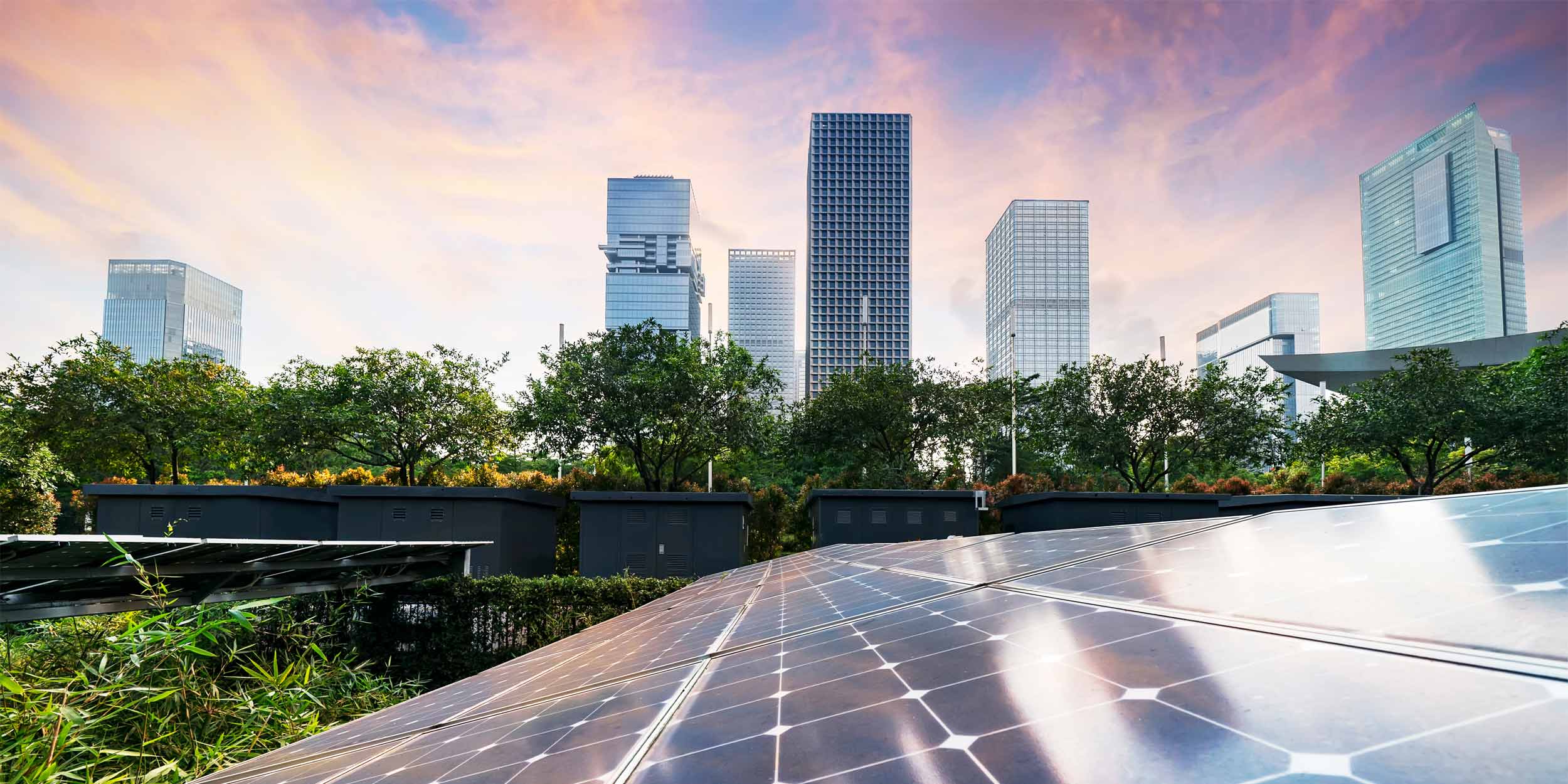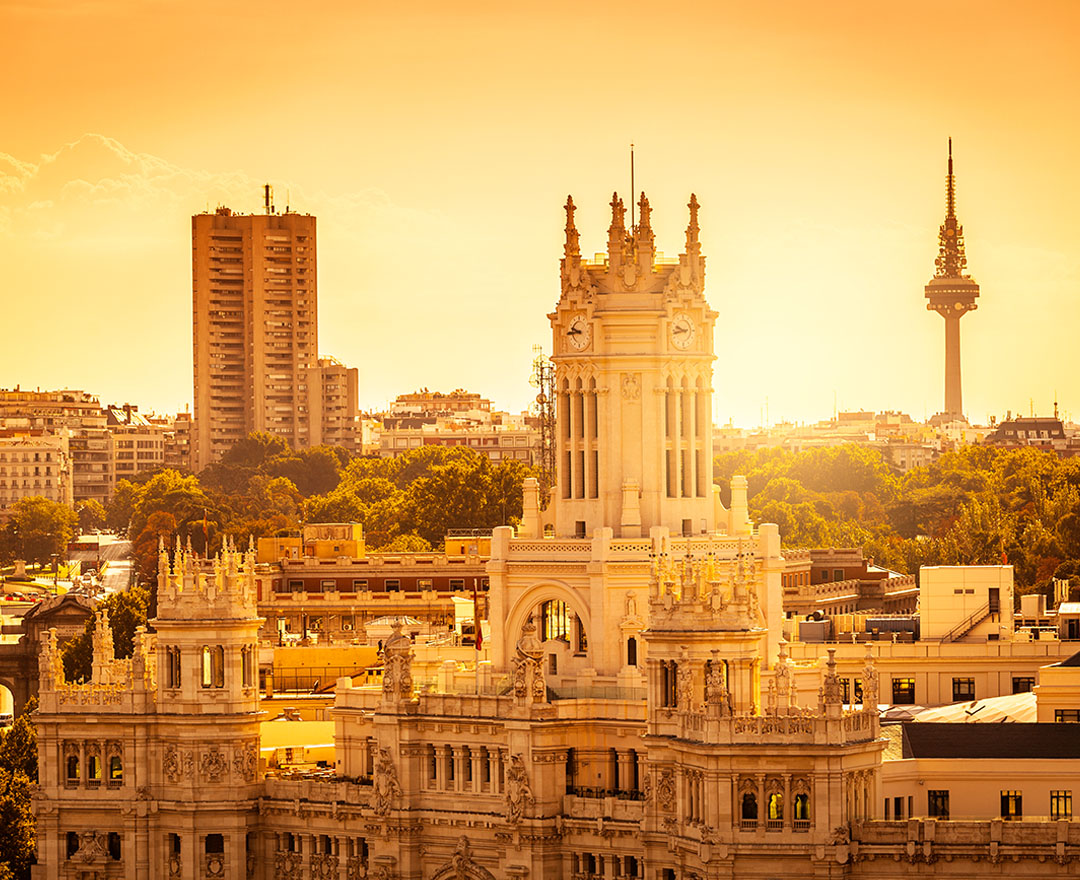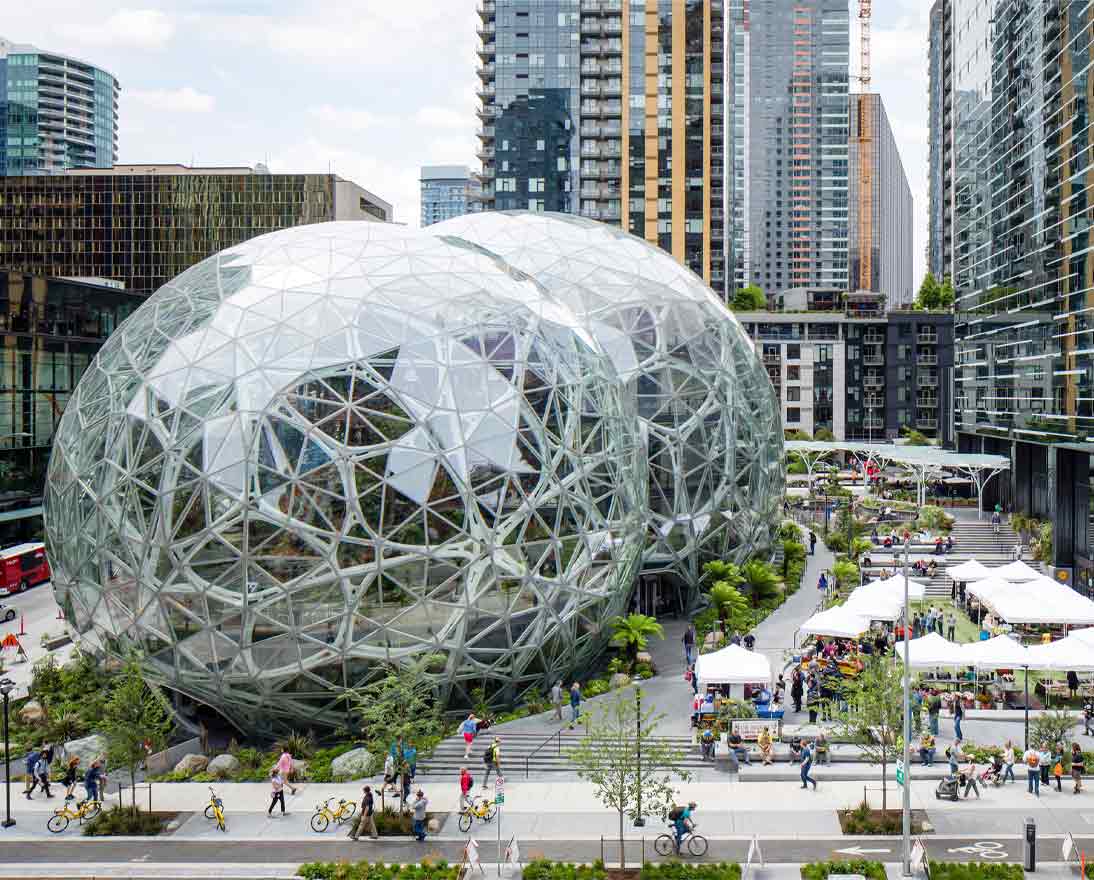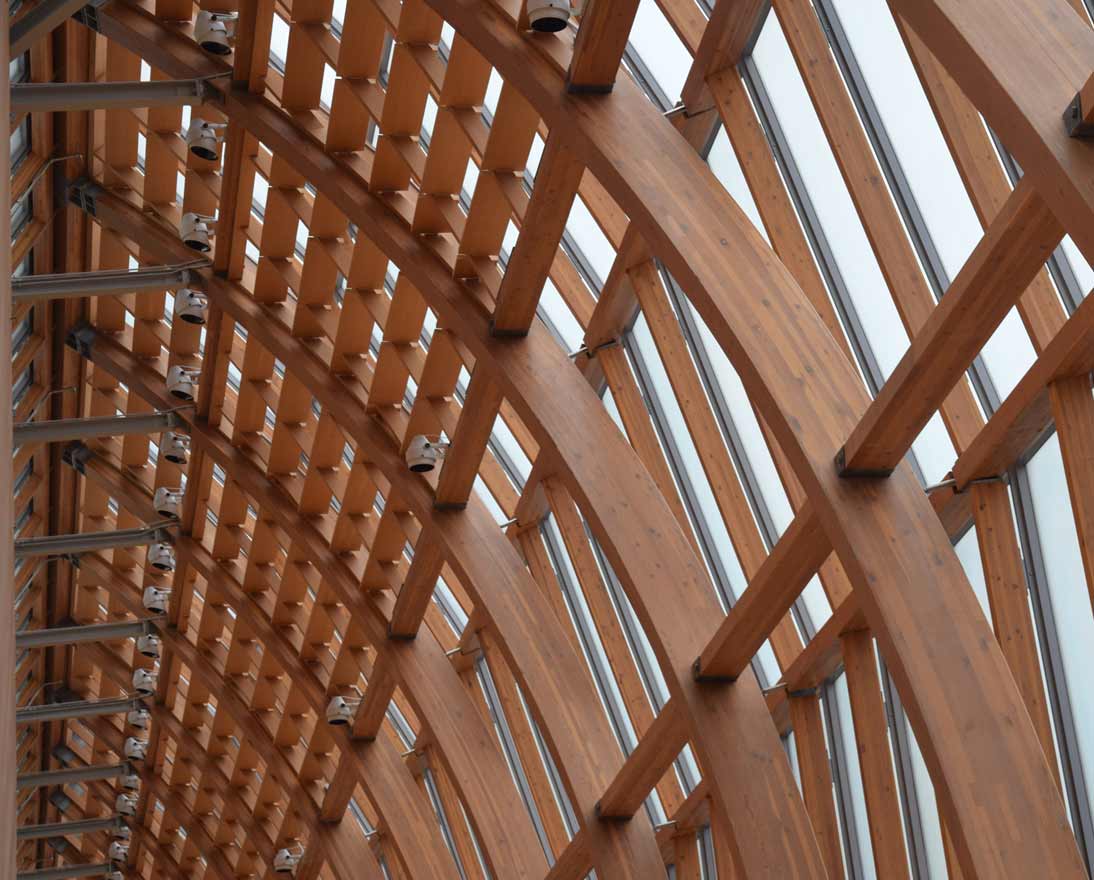Brick by brick: How Zurich is reducing carbon emissions in real estate
Net-zero transitionArticleApril 11, 20258 min read
As the world transitions to a net-zero economy, the building sector is a critical priority, responsible for about a third of greenhouse gas emissions globally. From improved energy efficiency to innovative construction processes and materials, the industry is embracing new opportunities with Zurich playing an important role as investor, occupier and insurer.
The building and construction sector is one of the largest emitters of greenhouse gases, accounting for about 37 percent of global emissions annually. Of these emissions, about 27 percent are generated by day-to-day energy needs like heating, cooling and lighting. The remainder is related to construction, in particular, the production and use of materials such as cement, iron, steel and aluminum which have a significant carbon footprint.
Unless we can find ways to reduce these emissions in our homes and businesses, the global economy will never reach net-zero. It’s a challenge that the Global Real Estate team at Zurich Insurance Group (Zurich) has taken to heart.
Zurich directly manages a EUR 14 billion real estate investment portfolio, which consists of more than 1,000 properties ranging from retail spaces to warehouses and homes to offices. In 2019, all the buildings together emitted about 40,000 tons of carbon dioxide equivalent (CO2e) which roughly corresponds to more than 10,000 passenger vehicles driven for a year. Zurich’s real estate team, which has already achieved a 30 percent reduction in the emissions produced by its portfolio against that 2019 baseline, aims for 45 percent by 2030. By 2050, the target is net-zero, a commitment enshrined in Zurich’s Climate Transition Plan, published in September 2024, describing the steps Zurich will take to reach net-zero and what has been accomplished so far.
Energy efficiency
Zurich’s real estate team is reducing emissions by changing the energy mix and improving the energy performance of its buildings.
Since 2019, it has tripled green electricity consumption. For example, by replacing oil and gas heating with renewable heat sources. This might involve connecting to fossil-free district heating systems off-site, or heat pumps and photovoltaic plants on-site.
About 300 buildings in total will see improvements between 2021 and 2025. The Swiss portfolio alone has seen 20 major renovation and new construction projects in recent years.
Sustainable investments
Energy efficiency is crucial to achieving net-zero carbon emissions for new buildings. In 2021, for example, Zurich’s real estate team invested in the construction of a residential property with 127 apartments in the Nieuw-West suburb of Amsterdam. The De Baak building, which was completed in January 2023, produces more energy than it uses thanks to solar panels on the roof and the facade of the building. High quality insulation, triple glass with sun protection properties, and overlapping balconies that provide shade, keep energy consumption low.
In addition, the building and the surrounding garden collect and reuse rainwater. The building also offers car sharing, electric vehicle-charging stations and a large number of parking spaces for bicycles to enable tenants to commute sustainably.
Offering affordable homes for middle-income households close to the city center, the investment aligns with Zurich’s sustainability targets. “This acquisition demonstrates Zurich’s strong commitment to sustainable investments in the real estate sector,” says Roger Baumann, COO & Head of Product Development at Zurich’s Global Real Estate team.
Retrofit
With approximately 80 percent of today's buildings expected to still be in use by 2050, it is crucial to retrofit them for energy efficiency.
Zurich’s real estate team is also busy retrofitting its building portfolio to help achieve net-zero goals. For instance, it has recently refurbished an office building in Barcelona’s Ensanche district called the Aribau 195 project. It offers 8,300 square meters of office space and 1,000 square meters of landscaped exteriors.
A key aspect of Aribau 195 was the extensive use of the existing structure, retaining over 80 percent of the original building to reduce waste and conserve resources. The redesign incorporated prefabricated concrete elements, and modular lattice panels to improve thermal and acoustic performance. Materials such as reinforced structural slabs and timber elements, were chosen for their low carbon footprint and potential for recycling and reuse.
The building runs on renewable energy sources, including photovoltaic and thermal solar energy. Its interior and exterior facades integrate large balconies with climbing vegetation to enhance natural cooling and ventilation.
A Building Information Modeling system helps to keep energy and water consumption low while facilities for electric vehicle charging and ample bicycle parking promote sustainable transportation. The building’s modular design allows for future adaptability, ensuring it can meet evolving needs without significant additional rebuilding.
The project aligns with Zurich’s goals to minimize carbon footprints and create more livable urban spaces.
Smart metering
Artificial Intelligence (AI) is becoming one of the most effective ways to reduce energy consumption. Zurich’s real estate team has integrated an AI-powered data management system that monitors energy, water and waste data across all of Zurich's buildings worldwide. In 2023, for example, two properties in the U.S. achieved almost 40 percent energy savings thanks to improvements based on the data.
“Using AI and data-driven decision-making in real estate investments plays a pivotal role in advancing decarbonization efforts,” says Baumann.
Green certifications
In Zurich’s portfolio, green-certified buildings currently constitute 35 percent of real estate assets under management and the aim is to continue increasing that share. Green-certified buildings enjoy lower operating costs through improved energy efficiency, and managing water and waste usage more effectively.
Well-known certifications include LEED (Leadership in Energy and Environmental Design) and the WELL Building Standard, which focuses on the health and wellbeing of the people who use the building. Zurich’s global headquarters in Zürich, Switzerland, has received LEED Platinum as well as WELL Platinum certification (in both cases the highest rating available). The North American headquarters in Schaumburg, Illinois, also has a LEED Platinum rating while Aribau 195 has been awarded LEED Platinum and is seeking WELL Gold certification.
Insuring new construction technologies
The new technology used in green building projects means that they often involve more risks than conventional projects. Evolving standards and regulations could result in liabilities. And there is a lack of knowledge about their long-term performance, so questions remain about the supposed financial savings or whether they save as much energy as predicted.
One way insurers can help builders is by insuring promising new technologies. For example, mass timber, a material made from layering wood and adhesives, is less carbon-intensive than steel and concrete. Building with timber could reduce the carbon footprint of a large building by up to 40 percent – provided the timber is sourced from sustainable forestry. Although companies may be concerned with fire risks associated with timber, tests have shown that when a mass timber element is exposed to fire, the outer surface burns and develops a char layer. This outer layer of char insulates the inner core of the timber element and helps protect the structural integrity of a mass timber building. After observing the fire tests, Zurich has become the leading insurer in the U.S. of buildings made from mass timber.
Other solutions include green upgrade coverage, which supplements existing replacement-cost coverage with the chance to build back better using more energy efficient, environmentally friendly materials. Another element is related expense coverage, which provides an additional limit of insurance to be applied to expenses related to green upgrades such as the reuse of building materials.
Time to change
When it comes to decarbonizing the building and construction sector, few doubt the scale of the challenge ahead. Three-quarters of the infrastructure that will exist in 2050 has yet to be built, the equivalent of adding an entire New York City to the world, every month, for 40 years.
This requires a rethink in the way we design and construct our buildings including the materials we use, where they come from and how they are deployed. We need to decarbonize conventional building materials such as cement, steel and uranium, as well as reuse and regenerate wherever possible.
“Without major changes in the building and construction sector, there is no clear path to net-zero,” says Linda Freiner, Zurich’s Chief Sustainability Officer. “Resilience, renovation and reuse are priorities for new buildings as well as renewable energy generation and low carbon construction.”



